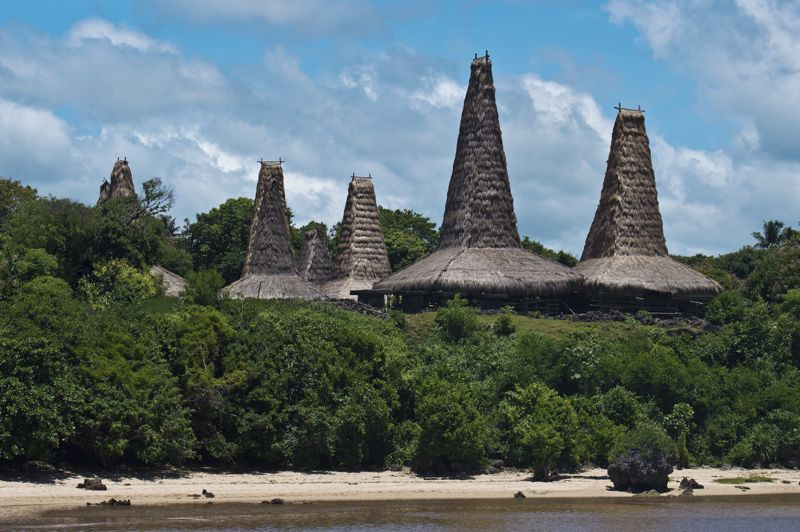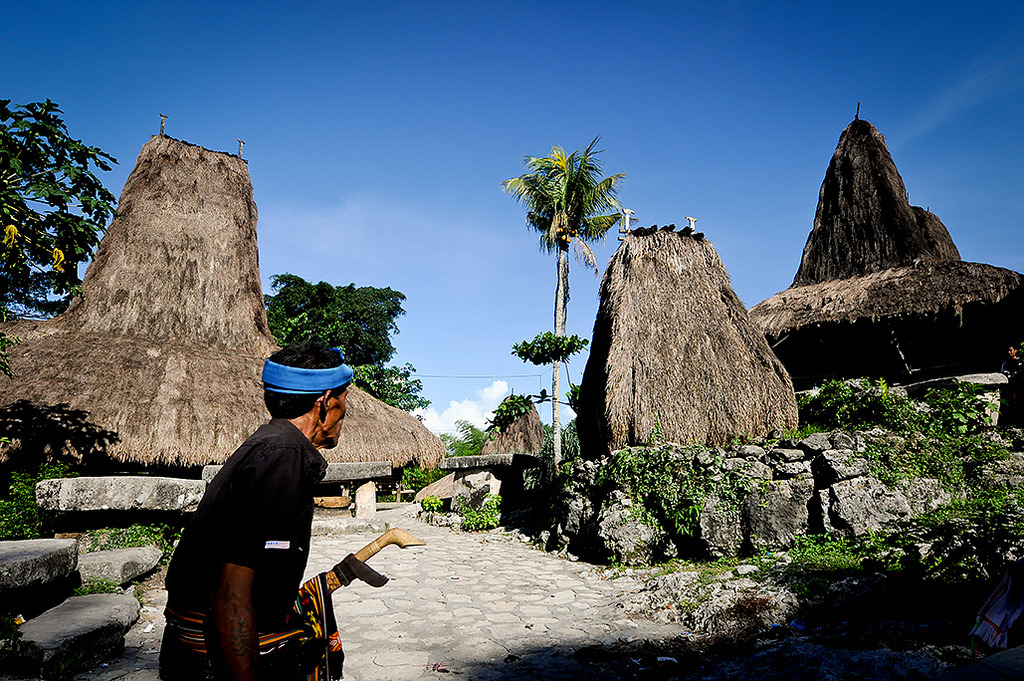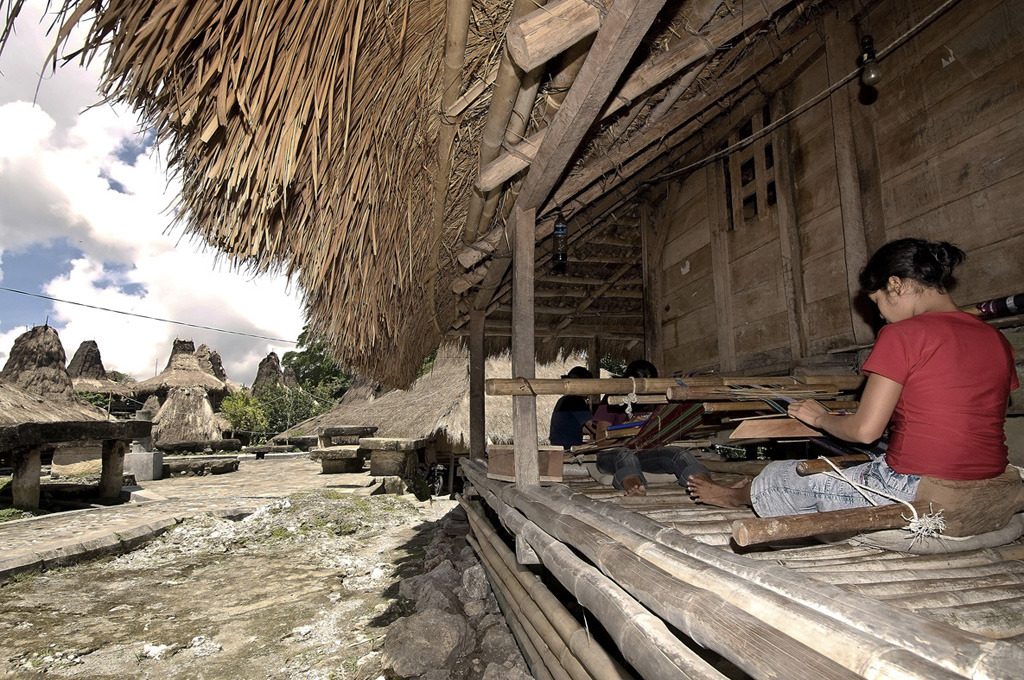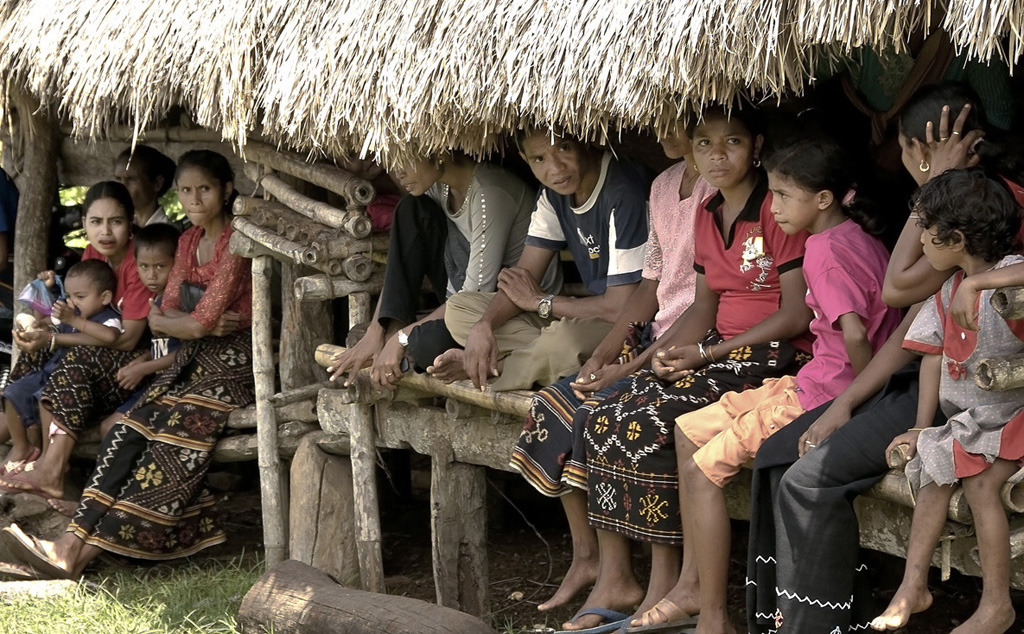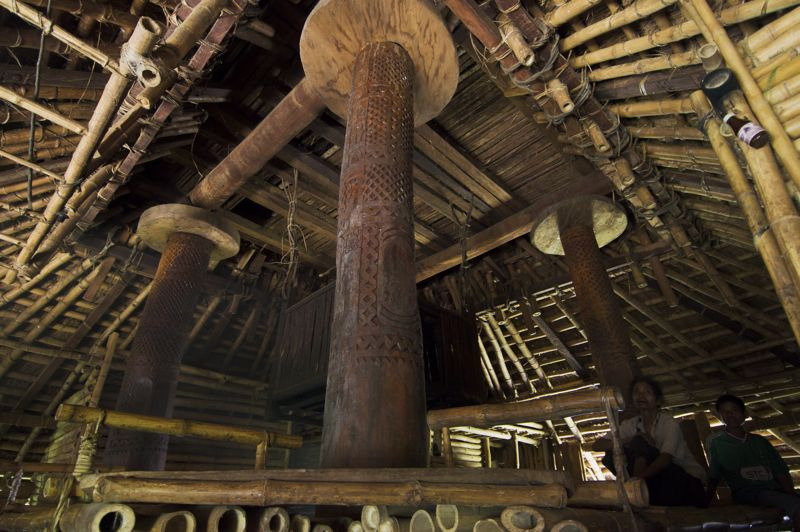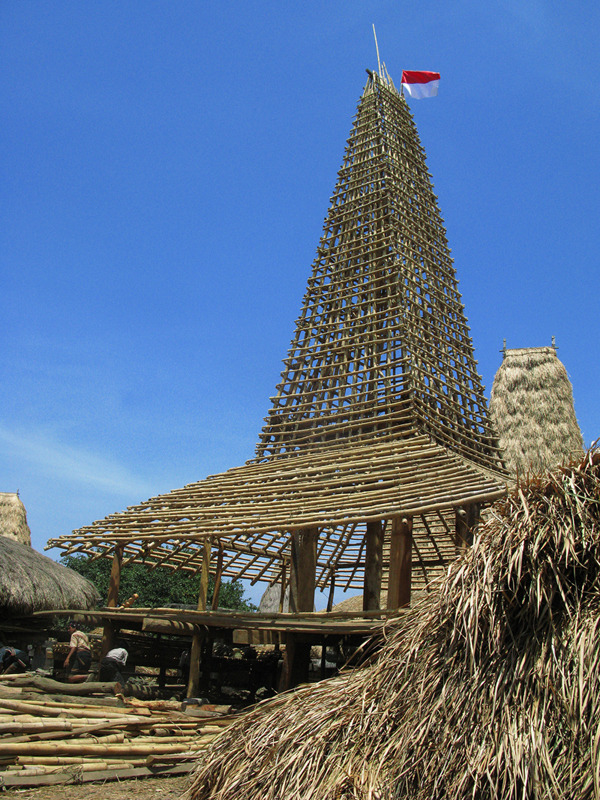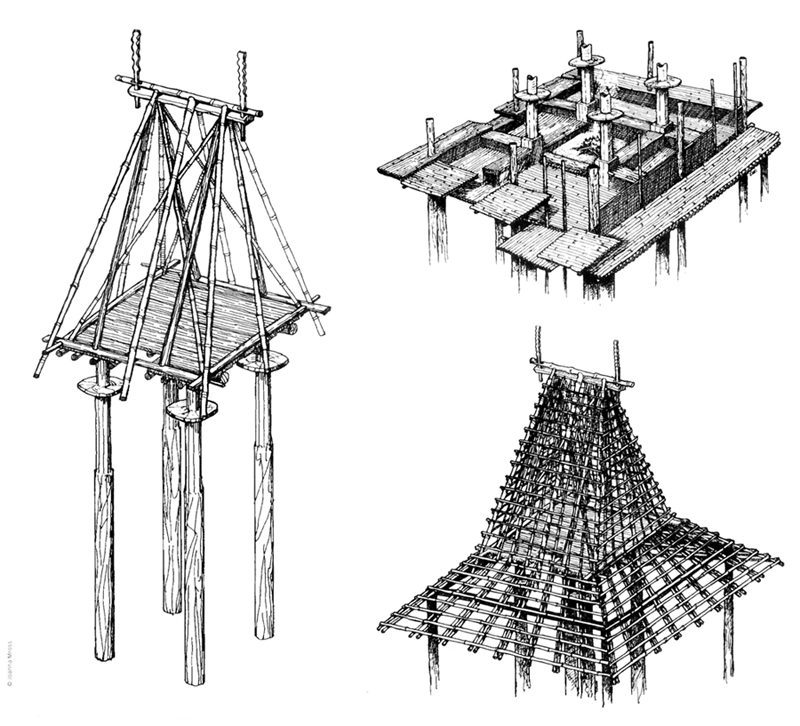V 35 |
Wewewa house |
type |
|
place |
|
population |
The Wewewa are one of the largest ethnic groups on the island of Sumba in southern Indonesia. They typically settle on hilltops and still live self-sufficient lives today, keeping horses, water buffalo and pigs and growing rice.
Their villages are arranged around a central square where they make sacrifices and commemorate their dead. All the buildings are similar in form and dimensions, except for the height of the roofs, which varies according to the social status of the owners. The largest building is the communal mother-father house (uma ratu), which is the first to be built. The sizes of the other houses, and their relation to the mother-father house are determined by the familial relations in the village, as is the division of tasks, ritual or physical. It is traditional that when young people move to other villages they are obliged to return when a new uma ratu is built.
Only material of vegetable origin is used in building the houses (wood, bamboo, lianas or grass). At the outset of construction sacrifices are made to the lords of the forest, only then can the trees be felled for the four main load bearing posts of the building. The upper parts of the posts are connected together by two parallel beams between which seven, nine or eleven beams of equal length are fixed perpendicularly. Another four form the top floor, which the roof rises steeply from. The roof is made of cogongrass (Imperata cylindrica) lashed to the supporting frame and rising in an anticlockwise direction. When the construction is complete not only animals are sacrificed but an offering is made from the building materials of the house too.
The ground floor of these three storey houses, built on stilts give shelter to their family’s livestock at night. The family’s living area is on the first floor. A fireplace is in the middle of the space, which is divided by four separate doors into four sections (a sacred part, the women’s area, the men’s area and the area for daily activities). A smaller space is partitioned off as a private bedroom. The uppermost storey of the house is the place of the spirits – the sacred objects placed guard the house and its occupants.
